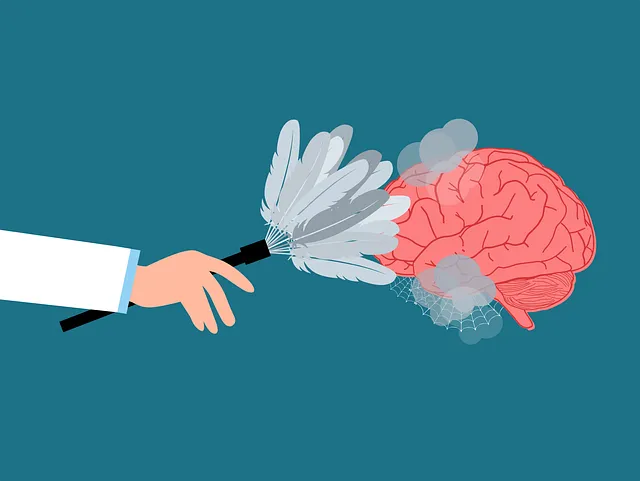Westminster and Kaiser, both with inpatient mental health services, face challenges related to healthcare provider burnout. Studies show that prolonged stress from heavy workloads and long shifts leads to burnout, affecting provider well-being and patient outcomes. To combat this, they implement various strategies: Westminster emphasizes structured risk management planning and protocols for stress mitigation, while Kaiser focuses on holistic programs with social skills training and supportive work environments. Both approaches aim to create healthier, more sustainable work conditions by integrating self-care practices, open communication, and tailored support services like Trauma Support and Crisis Intervention.
In today’s demanding healthcare landscape, burnout among providers is a pressing concern. This article explores effective strategies to prevent burnout in inpatient mental health settings, focusing on contrasting programs at Westminster and Kaiser. We delve into the causes and impact of provider exhaustion, analyzing specific interventions employed by these leading institutions. By understanding their approaches, we can enhance well-being and resilience among mental health professionals, ensuring optimal patient care.
- Understanding Burnout Among Healthcare Providers: Causes and Impact
- Strategies for Preventing Burnout in Inpatient Mental Health Settings
- Comparing Approaches: Westminster vs Kaiser Inpatient Mental Health Programs
Understanding Burnout Among Healthcare Providers: Causes and Impact

Burnout among healthcare providers is a significant concern, with high rates reported across various specialties, including inpatient mental health services. Westminster and Kaiser, for instance, have both acknowledged the challenges faced by their respective healthcare systems in managing burnout, especially within their inpatient mental health facilities. Burnout results from prolonged exposure to stressful work environments, often characterized by heavy workloads, long shifts, emotional exhaustion, and a sense of depersonalization.
The impact of burnout is far-reaching, affecting not only the well-being of healthcare providers but also patient outcomes. Studies suggest that burnt-out professionals are more likely to make errors, exhibit decreased job satisfaction, and have higher rates of depression and anxiety. In terms of mood management, self-care practices such as adequate sleep, regular exercise, and mindfulness techniques have been shown to mitigate burnout symptoms. Additionally, fostering a supportive work environment, providing resources for stress management, and promoting open communication can help prevent burnout and enhance overall well-being among healthcare providers.
Strategies for Preventing Burnout in Inpatient Mental Health Settings

Inpatient mental health settings, such as those operated by Kaiser in Westminster, face unique challenges that can contribute to healthcare provider burnout. To mitigate this issue, facilities should focus on holistic strategies that support both professional and personal well-being. One effective approach is integrating Mental Wellness Coaching Programs Development, which provides individuals with personalized guidance for managing stress and improving coping mechanisms. These programs can be tailored to address specific concerns like Trauma Support Services and Crisis Intervention Guidance, ensuring staff members have the tools to navigate challenging situations effectively while maintaining their emotional resilience.
Additionally, fostering a supportive work environment is vital. This involves regular team-building activities, open communication channels, and clear delineation of roles and responsibilities. Encouraging self-care practices, such as scheduled breaks and flexible work arrangements, can also help prevent burnout. By implementing these strategies, inpatient mental health settings like Kaiser in Westminster can create a healthier, more sustainable working environment for their staff.
Comparing Approaches: Westminster vs Kaiser Inpatient Mental Health Programs

When comparing Westminster’s and Kaiser’s inpatient mental health programs, notable differences emerge in their approaches to healthcare provider burnout prevention. While both organizations prioritize staff well-being, Westminster leans heavily on structured risk management planning for mental health professionals, incorporating rigorous protocols and guidelines to mitigate stress. In contrast, Kaiser focuses more on holistic, comprehensive programs that integrate social skills training alongside clinical care, fostering a supportive environment.
Westminster’s method involves systematic risk assessment and intervention strategies, ensuring a proactive approach to burnout prevention. On the other hand, Kaiser’s strategy emphasizes building social connections and promoting work-life balance through innovative training and support systems, aiming to foster resilience among mental health professionals. This contrast highlights diverse paths towards addressing the pressing issue of burnout in healthcare providers, ultimately reflecting different organizational cultures and values.
Healthcare provider burnout is a pressing issue, particularly within inpatient mental health settings. By understanding the causes and impact of burnout, we can implement effective prevention strategies. Both Westminster and Kaiser programs offer valuable insights through their distinct approaches. While Westminster focuses on holistic well-being, Kaiser emphasizes data-driven improvements. Integrating these strategies can foster a supportive environment, enhance job satisfaction, and ultimately improve patient care in inpatient mental health facilities. In comparing these models, we find that comprehensive burnout prevention requires a tailored, multifaceted approach that addresses both individual and organizational factors.


